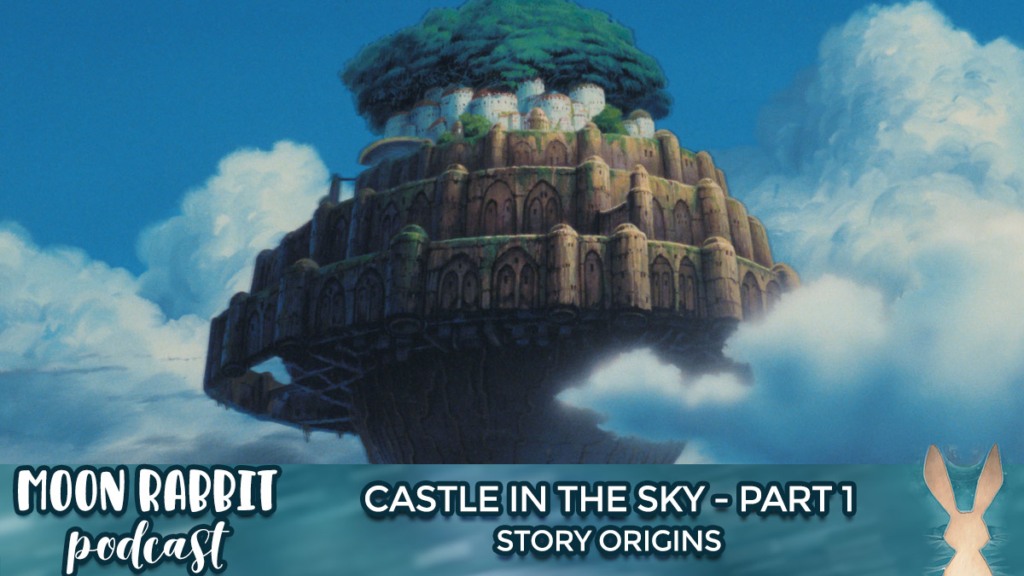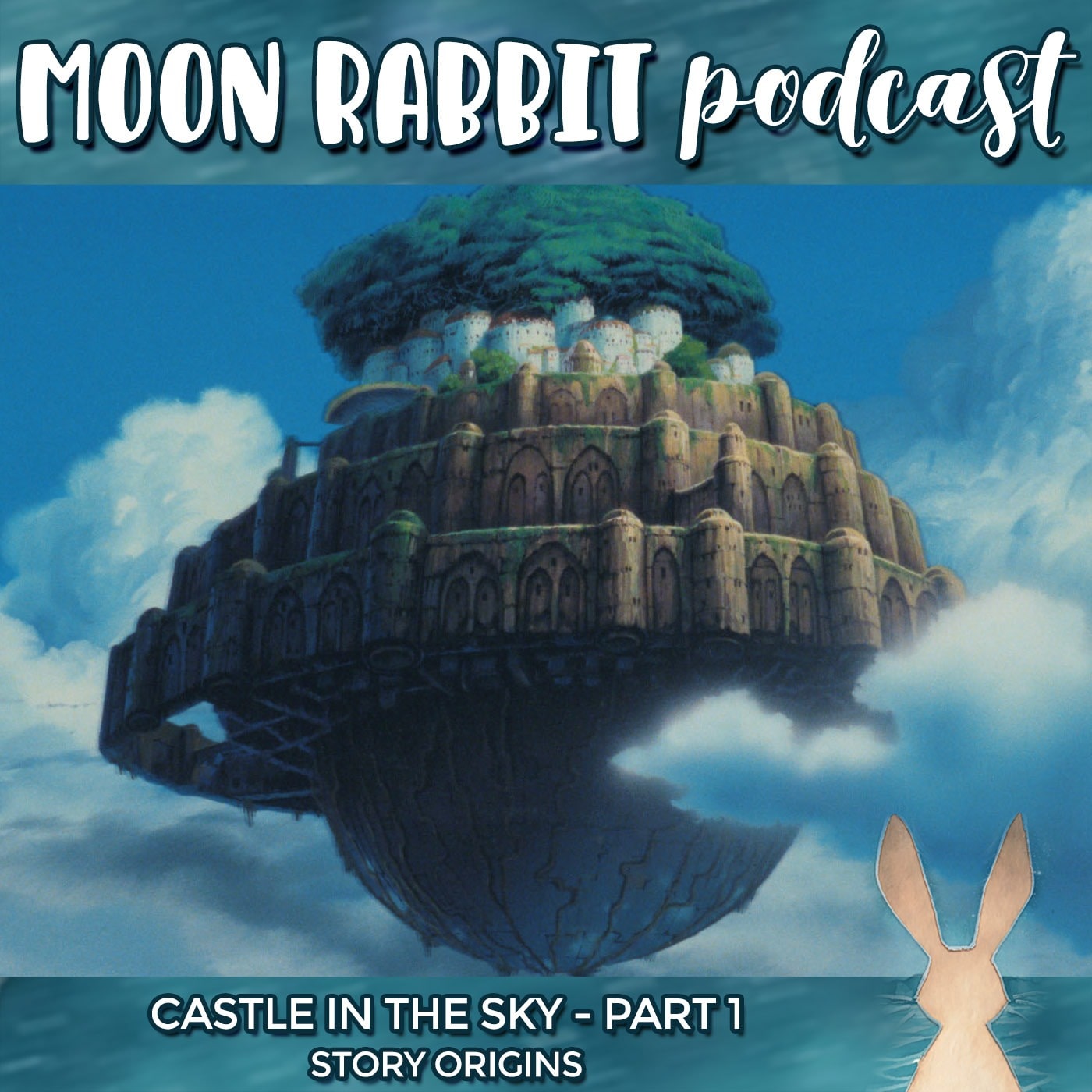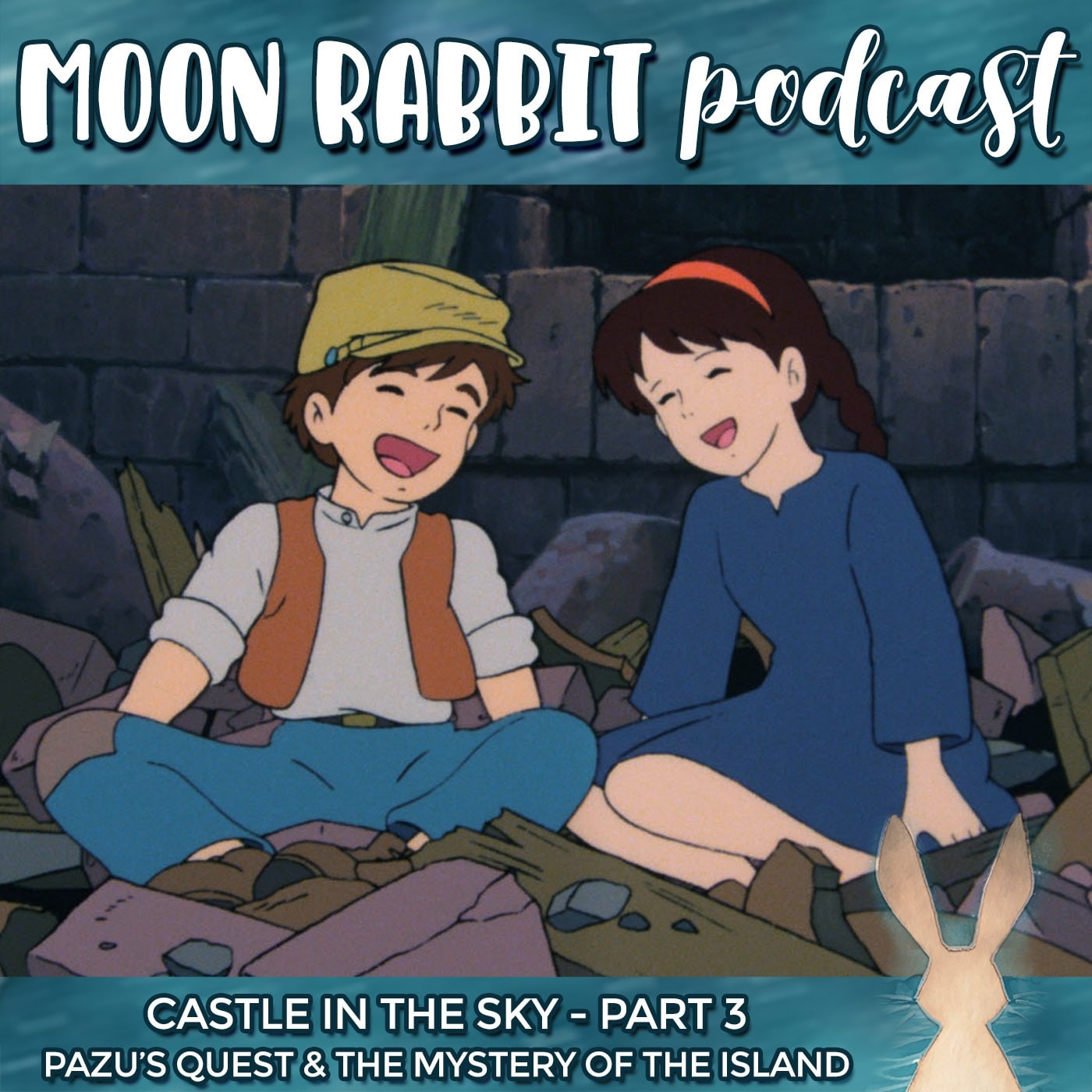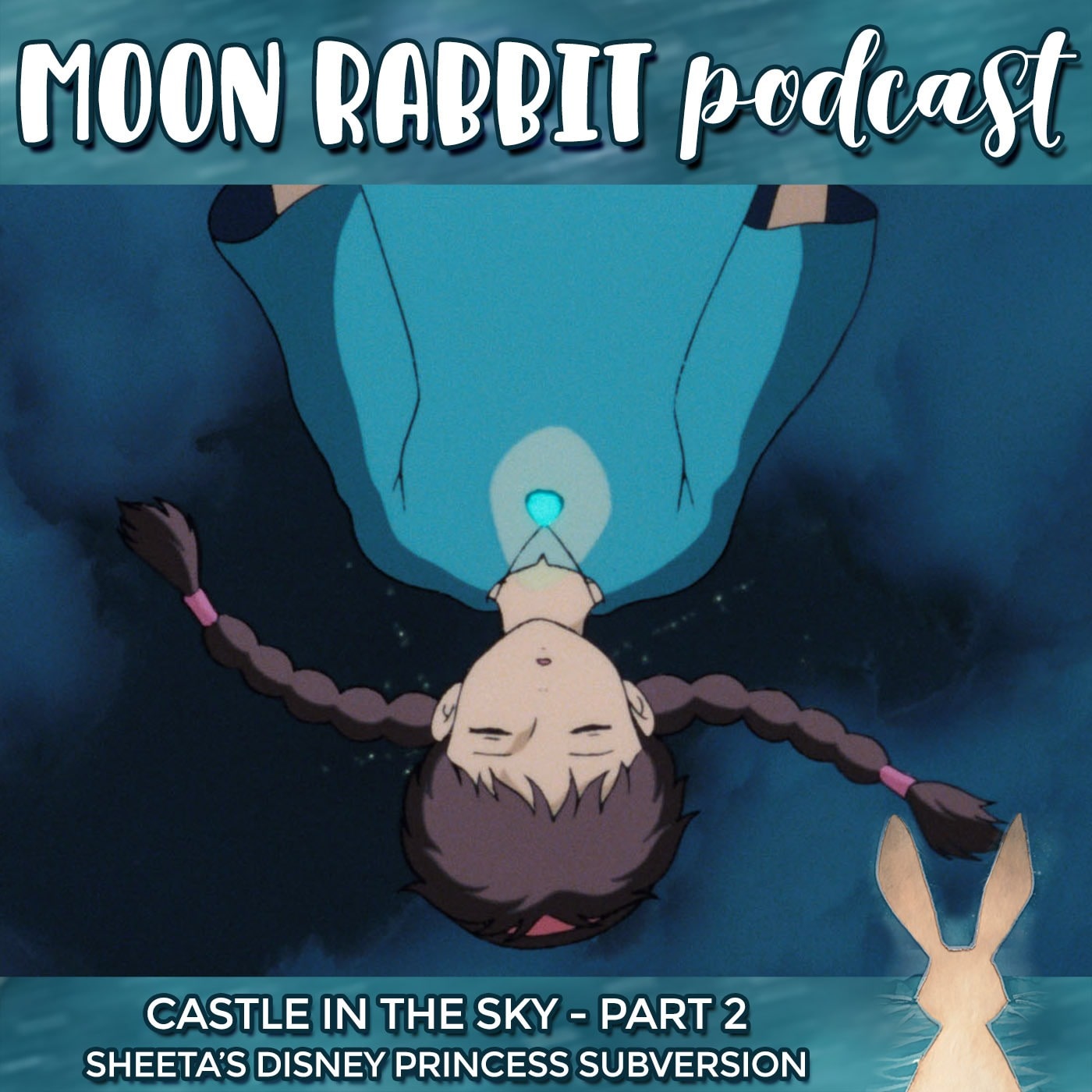Castle in the Sky: Story Origins
Description
Welcome back to the Moon Rabbit podcast, where we explore the hidden layers of film storytelling. And today we’re entering the world of Tenku no Shiro Rapyuta, or Castle in the Sky, or — in countries where the complete title is allowed to be said — Laputa: Castle in the Sky; one of the early Miyazaki masterpieces that is a huge classic in Japan but often goes under the radar in the West.
In fact, Castle in the Sky is often waved away by Western film critics as simplistic and not nearly as polished as later Miyazaki films.
But you know what? That’s a huge misconception.
Just by picking a handful of story elements in this film to focus on, we ended up with a three episode mini-series for the Moon Rabbit podcast.
So if you already love Castle in the Sky and were looking for a deeper look at how all of its individual pieces of genius fit together, this episode is a must-listen.
And if you’ve seen this film but are on the fence about it, this will be a good entry point for you to see what the fuss is about.
In the first bit of our conversation, we’ll start out by focusing on:
- the origins of the film’s story
- how the film’s scouting trip to Wales and the South of England influenced the film’s landscape and characters
- and we’ll also talk about the film’s unique childhood lens — and how it changes depending on whether you’re watching with the English dub or the original Japanese voice acting.
Later, in the second episode we’ll be taking a look at Sheeta’s mythology and the gender tropes that Miyazaki flips over, and in the final episode we’ll get into Pazu’s father quest and the film’s crucial final act, including what the ending really means.
Needless to say there will be spoilers throughout for the film, so tread carefully.
And for these episodes, I’m back with independent film aficionado Flick Beckett, who’s video content co-ordinator for Picturehouse Cinemas and also the host of film review shows Flick’s Flicks and Inside Picturehouse. Flick specialises in indie and world cinema, and is always an absolute joy to talk to as she gets as super excited about Ghibli films as I do.
So it’s time to put on your goggles, secure your amulets, and fire up your engines.
I’m your host, Adam Dobay, and let’s Follow the Moon Rabbit to the mystical flying island of Rapyuta.
 </figure>
</figure><iframe loading="lazy" src="https://widget.spreaker.com/player?episode_id=43755498&theme=light&playlist=false&playlist-continuous=false&chapters-image=true&episode_image_position=right&hide-likes=false&hide-comments=false&hide-sharing=false&hide-logo=true&hide-download=false" width="100%" height="200px" frameborder="0"></iframe>
(An adult language warning if you can speak or understand Spanish: we’ll be saying one specific word a lot, that is in the film’s title as well as a named location in the film that contains a Spanish swear word. So if you don’t want anyone else around you to hear that one word, please put some headphones on for the duration of this episode.)
How to listen to the Moon Rabbit Podcast?
- Right here, right now: Click on the big play button above. Magic!
- Take it with you: Download the mp3 for this episode
- On your favourite podcast app: search for “Moon Rabbit” on iTunes, Spotify, Google Podcasts, Podcast Addict, or your preferred podcast app. (And if you can’t find it, let me know which service is missing it!)
And if you want to read while (or instead of) listening, here’s the episode’s full transcript!
Castle in the Sky’s real-world influences
How Gulliver’s Travels inspired Castle in the Sky
Adam Dobay: Hello, Flick!
Flick Beckett: Hi, Adam!
Adam: Welcome back.
Flick: Thank you. It’s lovely to be back.
Adam: It feels like it’s been 60 years since we last talked and not just a couple of months. But that’s the sense of time. So with that we can get into our actual topic for today, which is Laputa: Castle in the Sky. Last chance to put on headphones, because I’m going to say this word a lot. They actually change: sometimes it’s Laputa sometimes it’s Raputa. The characters call it Rapyuta in the Japanese. So if you don’t want to offend anyone in Spanish, you can just refer to it as Rapyuta. And then it’ll be a non- issue.
So it’s based on Jonathan Swift’s Gulliver’s Travels’ Laputa. Yes, I think down to the size of the floating island. I looked it up – I forgot the numbers, but it was roughly the size. The idea definitely comes from there and Pazu even opens a book and I think either mentions Gulliver or mentions Swift or mentions someone. So the the literary connection is made.
And also, Swift’s tendency to use mythological spaces to explore political issues is something that is not as frequently mentioned about this film, but I think it really tracks because Swift’s original story is about these people who live up in the sky and are so — I think it was based on the Royal Society or something. So he was criticising all the eggheads.
Flick: And they’re very out of touch. And they have servants, and they don’t pay any attention to them, they’re very above all, sort of any kind of what they consider demeaning jobs. You know, I mean, I thought, yeah, it’s incredibly prescient.
Adam: Yeah, and both, Swift and Miyazaki, because Miyazaki then goes on to explore this subject and say, “Look, here, we have this thing. No one lives there anymore.” I was surprised I forgot that, that they don’t know that there’s no one there. Sheeta, one of Sheeta’s first sentences when they get to the island, is to say, “Where’s all the people?” And I’ve seen this film so much now that I completely forgot about this.
But it’s really important that we’re expecting a society to be there, but it’s gone. And we’re going to explore what’s on the island and why is exactly the things they’re that they’re there on the island and the latter half of this. But I find that really interesting that to make his point, Miyazaki has no one on the island, and then he has Sheeta and Pazu on the island. And then the others come in. And then and then things escalate really quickly from that point. So yeah, definitely, he takes a number of cues from Swift.
Miyazaki’s Welsh scouting trip
Adam: Something else I found something that I could never put together was I read, it’s widely known that Miyazaki and crew went to Wales to scout for this film, which you can see in the first act, it’s literally a Welsh mining village, except for the huge drop in altitude. I’ve never been to Wales, but I don’t think you have those huge cliff edges there. And they actually had two trips, and Miyazaki went on a trip in early 80s. And then preceding the film, which came out in 1986.
So we’re two, I think, two years after Nausicaa, which we last discussed and two years before Totoro. So this is the in-between film. And for the second trip, they went after the miners’ strike, which everyone in the UK will know and everyone else will have to Google because we’re definitely not going to go into the miners’ strike in this episode.
And what they saw there was all these mining villages that have been either abandoned or you know just the aftermath of the the strike that the workers lost in the end. So there was a lot of depression going on, but also a lot of solidarity going on because of the the miners were fighting together for the same cause for for all those years.
So apparently all that part about the the miners’ solidarity comes from this because that really struck a chord with Miyazaki, who was the leader of his union, when he worked at the TOEI animation studio. So he went in there as a young upstart and said, “Oh, this place doesn’t have a union. Well, I’m quite left leaning, so workers should have rights within the company.” And you know, he just started organising. So like, I can see how, how this really rattled his mind and went directly into the film.
Flick: Yes, absolutely. And when you first meet Pazu, and he’s getting his dinner for his boss, and he says, you know, finally the mines are open again. You know, and that








